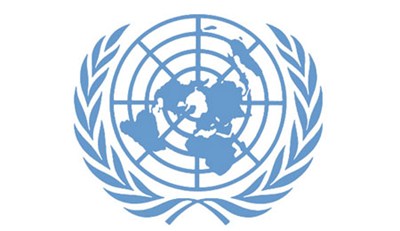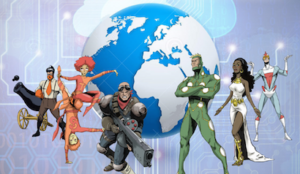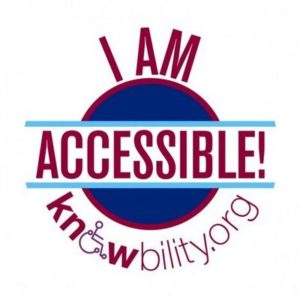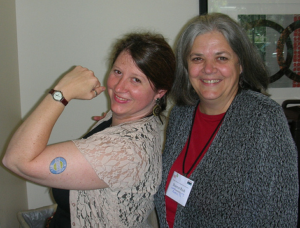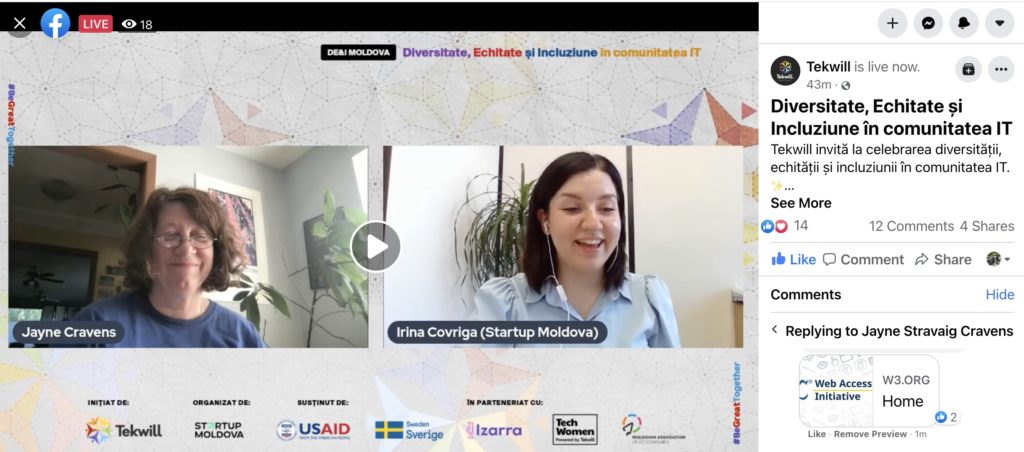
I spent 15 minutes early one morning last week talking to IT professionals in Moldova about how accessibility online makes the world a better place for everyone. The opportunity came about thanks to a colleague I worked with at the United Nations who now works for the Swedish Swedish Ministry for Foreign Affairs in Moldova. It was part of an initiative her government, and USAID, supported in Moldova regarding Diversitate, Echitate și Incluziune în comunitatea IT (Diversity, Equity and Inclusion in the IT community), an initiative of Tekwill, organized by Startup Moldova and in partnership with Izarra, TechWomen Moldova and the Moldovan Association of Information and Communications Technology Companies.
Evenimentul reunește antreprenori locali pentru a încuraja și abilita participanții să-și împărtășească ideile fără limite sau frica de a fi judecați dar și să manifeste mai multă atenție privind respectarea normelor și etichetei culturale din regiune – credințe, convingeri, ținută sau obiceiuri.
The event brings together local entrepreneurs to encourage and empower participants to share their ideas without limits or fear of being judged but also to pay more attention to respecting the rules and cultural etiquette of the region – beliefs, beliefs, dress or customs.
Located in the heart of the Technical University of Moldova (UTM), “Tekwill is a 4,000m² hub that has everything one would ever need for ongoing growth, from co-working spaces, tech labs (IoT, 3D printing) and community events.”
Tekwill is built on the belief that to be competitive economically in the years to come, Moldovan startups and innovators must begin adopting and creating industry-disrupting technology today. Therefore, this message was coded into our name; “Tek” – for technology and “will” – for our future. The organization regularly gathers local and international tech leaders to empower the development of Moldova’s startup ecosystem by facilitating results-oriented innovation and collaboration.
You can view my portion of the event, in English, on YouTube at around the 26:05 mark or via this Facebook page, at about the 26:10 mark. Introduction in Romanian.
I’m very partial to Moldova, having met some wonderful young Moldavians in 2019 hosted by World Oregon (I did a workshop on countering misinformation online). I have always found a very electrifying entrepreneurial, optimistic spirit among young Eastern Europeans, particularly from Moldova, Ukraine and Poland – people ready to innovate, to include, to explore and to create. I so long for the days when we can travel again so we call meet up face-to-face again!
One of the many things I’m proud of in The Last Virtual Volunteering Guidebook, is that it features an entire chapter on accessibility and diversity. I’ve been advocating for accessibility online since 1994 – and I’m going to keep doing it!
Also see:
- Does your web site make people cry?
- Are Accessible Web Sites Only For Companies That Can Afford Professional Web Designers?
- Accessibility: a human rights & a digital divide issue too many ignore
- accessibility, diversity & virtual volunteering
- My quest for an accessible web site of my own.
- Human rights, the digital divide & web accessibility Video, 4:40 minutes.
- How Volunteers Can QUICKLY Help Your Program To Be More Accessible Online
- United Nations site for people with disabilities is inaccessible

If you have benefited from this blog or other parts of my web site or my YouTube videos and would like to support the time that went into researching information, developing material, preparing articles, updating pages, etc. (I receive no funding for this work), here is how you can help.

